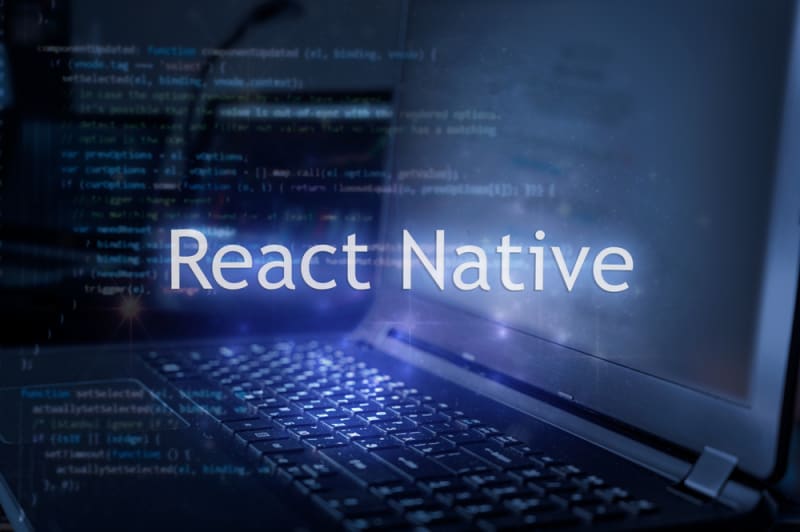To be or not to be? Flutter vs. React Native is the quandary that developers face when starting their app project and selecting the appropriate technology. Which tool to choose between, Flutter and React Native, are the two industry leaders in cross-platform app development?
This article will help you decide on your app development project by comparing and contrasting the two tools. In the end, we will also learn how ZEGOCLOUD can set you free from the boundaries of either selecting Flutter or React Native for your RTC app development.
Flutter vs. React Native cross-platform app development.
First, let’s clarify what we mean by ‘cross-platform development.’ As the term suggests, multiplatform development is creating a single application – specifically a mobile app – that operates seamlessly across several operating systems. Developers can produce and distribute mobile assets compatible with Android and iOS without recoding them separately for each platform by sharing the source code of cross-platform programs.
One-third of mobile developers employ cross-platform technologies, with the remainder relying on native tools. Flutter and React Native are the most powerful and most used. According to Statista’s 2021 developer poll, 42% of software engineers choose Flutter as their primary cross-platform mobile framework, and 38% use React Native.
As a result, one must thoroughly study the capabilities, benefits, and drawbacks of Flutter vs. React Native.
Flutter vs. React Native: a comparison.
React Native and Flutter are excellent solutions for designing cross-platform applications. Nevertheless, as we have seen, they have numerous peculiarities that set them apart. Flutter and React Native has several benefits and limits in terms of functionalities. So a Flutter vs. React Native comparison will help us assess what to choose.
Language
React Native is slower than Flutter since it requires JavaScript bridging. Because of its object-oriented philosophy, Flutter uses Dart, which compiles faster and takes less time to build code.
On the other hand, Dart is not commonly used and is impeded by the fact that many IDEs need to support the language. React Native has a more extensive community following since it embeds JavaScript, which benefits developers who don’t need to learn a whole new language. As a result, while comparing languages, JavaScript enables React Native to grab the lead.
Building a Developer’s team
React Native has a more established and experienced developer community than Flutter due to its earlier release and more popular Javascript programming language. On the other hand, Flutter is now the market leader in the cross-platform application development tool business, and the developer pool is catching up quickly.
When it comes to recruiting developers nowadays, they are almost certainly familiar with React Native. More quantity does not automatically imply lesser pay; according to Glassdoor, the average yearly salary of a React Native developer is somewhat more than that of a Flutter developer.
Flutter vs. React Native Structure
As we know, React Native uses JavaScript as a programming bridge that Flux architecture requires to run the scripts. As a result, it naturally reduces app rendering time, which is a disadvantage of Flux compared to the BLoC architecture of Flutter. The BLoC design is straightforward, testable, and effective. Along with Dart language, Flutter’s architecture design shortens the time required to become acquainted with a project, which is especially important when working with tight timelines. In conclusion, Flutter wins the structure ‘battle.’
Installation and Development
Although Flutter is one of the quickest cross-platform frameworks for app development, installation time is slower than in React Native.
Because Flutter does not employ program bridges, you must download the whole binary for the platform from its GitHub source. Additionally, it is necessary to include separate code files for Android and iOS platforms when an app needs complex UI components. As a result, the Flutter installation process takes longer and involves more steps. On the other hand, Flutter offers access to many third-party UI frameworks with ready-to-use components, accelerating the development time and making it more manageable. Thus, when it comes to the development process and UI ease, Flutter takes the lead in Flutter vs. React Native match.
Vice versa, you may choose React Native based on installation issues. The node package manager quickly and easily installs React Native.
Flutter vs. React Native Documentation
Flutter is a newer framework that prioritizes extensive documentation with well-planned how-to videos and resources. Because it is primarily reliant on third-party libraries, React Native documentation is hardly updated. Although the documentation for React Native is not very outstanding, many developers find it more user-friendly.
Overall, both documentation guides are excellent.
Quality and Performance
The key factors to consider when assessing performances are speed and app size.
Flutter has a minor performance advantage over React Native, and the apps load somewhat faster. Dart language and BLoC architecture provide decent performance by default, with a smoothness setting of 60 frames per second contributing to the app’s speed. On the other hand, Flutter generates enormous file sizes.
React Native’s performance is somewhat hampered, albeit minimally, by using JavaScript bridge to operate the apps. Even if it may look so, Flutter does not outperform React Native in terms of performance. Nevertheless, many developers agree that Flutter has too many additional features, making it a preferable choice.
Regarding quality assurance and testing, it’s impossible to pick a clear winner. Flutter incorporates numerous Google testing and integration features while providing fewer third-party testing tools. React Native, on the other hand, allows you to circumvent such constraints by utilizing different third-party testing tools such as Detox or Jest.
Device Compatibility
In this case, we have a clear winner, Flutter.
Flutter apps are compatible with iOS 11 and, React Native apps. For Android, Flutter requires Android 4.1 or above, while React Native requires Android 6.0 or higher.
Flutter vs. React Native: a wrap-up.
Flutter and React Native are good frameworks for developing cross-platform mobile apps. These two technologies profit from enormous success and long-term trust.
Flutter’s popularity has evolved in recent years. React Native was famous in 2018, but Flutter currently has the upper hand. However, because of the many widgets and components, as well as the Dart language, many users prefer to avoid Flutter.
Flutter’s complexity is both a hindrance and a benefit because it is more powerful and versatile. Your decision will be influenced by who you are, what you want to do, and the resources available to you. For something simple but with a more limited range, React Native may be the way to go, but if you’re ready to invest time and effort in achieving pixel-perfect design, Flutter is the way to go.
Choose Flutter, for example, if you want to save time advertising an app that requires a lot of customization or specific tasks. Choose React Native if your project requires 3D rendering, cross-platform support, or code reuse for a web application.
Flutter vs. React Native: ZEGOCLOUD developer-friendly API & SDK.
ZEGOCLOUD is well-known for its numerous services and consistently high-quality maintenance. Audio calling, video calling, texting, live stream communications, and other solutions are available in many scenarios for social or commercial purposes. Entertainment is another primary focus of ZEGOCLOUD, where users may enjoy games, music, and movies.
Its cost is reasonable since they care for individuals of all income levels. Prices vary depending on the amenities, ranging from $0.99 to a few hundred dollars. Quality has always been the top concern in all ZEGOCLOUD operations to provide substantial comfort to their clients.
Sign up for ZEGOCLOUD and receive 10,000 free minutes per month.
For more information:





Top comments (1)
Dont try to use flutter on arm64 it's been broken for the last 4 months
github.com/flutter/flutter/issues/...